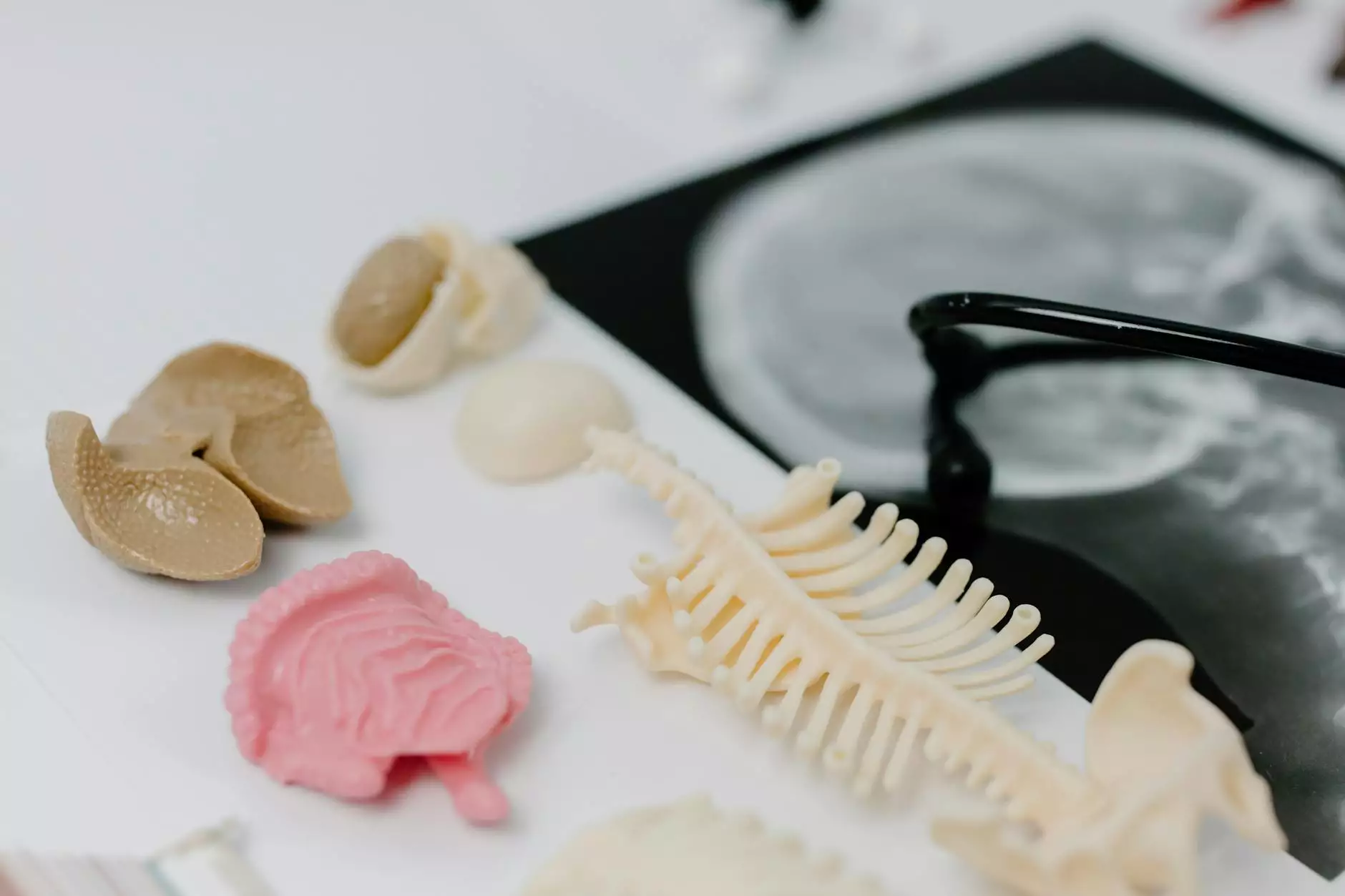Comprehensive Guide to Lung CT Scan: Your Essential Tool in Modern Medical Diagnostics

Advancements in medical imaging technology have revolutionized the way healthcare professionals diagnose and treat respiratory and thoracic conditions. Among these innovations, the lung CT scan stands out as a vital, non-invasive, and highly detailed diagnostic tool. Whether you're managing chronic lung diseases, evaluating unexplained symptoms, or monitoring treatment progress, understanding the significance of a lung CT scan can empower you to make informed decisions about your health.
What Is a Lung CT Scan? An In-Depth Overview
A lung CT scan (Computed Tomography scan of the lungs) is a specialized imaging procedure that combines multiple X-ray measurements taken from different angles to produce cross-sectional images of the lungs. Unlike a traditional chest X-ray, which provides a flat, two-dimensional view, a CT scan offers detailed, three-dimensional visualizations of lung tissue, airways, blood vessels, and surrounding structures.
This level of detail enables healthcare providers to detect even minute abnormalities that might be missed in standard X-ray imaging. The precision of a lung CT scan makes it an indispensable diagnostic modality for various respiratory and thoracic conditions, aiding in early detection and effective management.
Why Is a Lung CT Scan Crucial in Modern Medicine?
The importance of a lung CT scan extends across multiple medical domains, especially in respiratory health,oncology, and surgical planning. Here are some core reasons why this imaging technique is a cornerstone in contemporary healthcare:
- Early and Accurate Detection: Ability to identify lung tumors, nodules, infections, and structural anomalies at an early stage.
- Detailed Anatomical Visualization: Precise mapping of lung pathology facilitates targeted interventions.
- Assessment of Disease Extent: Helps in staging cancers, evaluating the severity of infections like pneumonia, or chronic conditions such as COPD.
- Guidance for Interventions: Essential for guiding biopsies, surgeries, or radiation therapy procedures.
- Monitoring Disease Progression and Treatment Response: Tracks changes over time in the lungs, ensuring optimal treatment planning.
The Process of Conducting a Lung CT Scan
Understanding what to expect during a lung CT scan can alleviate patient anxiety and ensure smooth execution of the procedure. Here’s a step-by-step overview:
Preparation
- Informed consent and medical history review.
- Fasting may be required if contrast dye is used.
- Discontinuation of certain medications as advised by your healthcare provider.
- Changing into a gown and removing jewelry or metal objects to avoid imaging artifacts.
Procedure
- The patient lies flat on the scanning table, often on their back.
- God in sense of breathing instructions for optimal image quality.
- If contrast dye is administered, it is injected intravenously to enhance vascular and lesion visualization.
- The table moves slowly through a doughnut-shaped scanner that captures images from various angles.
- The entire process typically lasts between 10 to 30 minutes.
Post-Procedure
- Monitoring for any adverse reactions if contrast dye was used.
- Hydration is encouraged to facilitate dye elimination.
- The images are analyzed by a radiologist, who provides a detailed report to your healthcare provider.
Interpreting Lung CT Scan Results: What Do They Reveal?
Results from a lung CT scan can reveal a broad spectrum of health conditions, each requiring specific management strategies. Here are some common findings and what they might indicate:
Detecting Lung Tumors and Nodules
Small nodules may be benign or malignant. Detailed imaging helps in determining the necessity for biopsy or surgical intervention.
Identifying Pulmonary Infections
Pneumonia, tuberculosis, and fungal infections often exhibit characteristic patterns in CT images such as consolidations, cavitations, or ground-glass opacities.
Assessing Chronic Lung Diseases
Conditions such as COPD and emphysema showcase destructive changes in lung tissue, air trapping, and airway narrowing that are visible in high-resolution scans.
Evaluating Pulmonary Embolism
Blood clots within lung arteries can be precisely located during a CT angiogram, a specialized form of lung CT scan.
Monitoring Disease Progression and Response
Regular scans enable tracking of tumor size, infection resolution, or progression of fibrotic changes, which is critical for effective treatment adjustments.
The Role of Lung CT Scans in Sports Medicine and Physical Therapy
In sports medicine and physical therapy, a lung CT scan plays an influential role in holistic health management. Athletes and active individuals are often at risk of respiratory injuries or conditions requiring precise diagnosis.
For example, a professional athlete with unexplained shortness of breath may undergo a lung CT scan to identify underlying issues like pulmonary contusions, airway obstructions, or early signs of infectious processes. Accurate diagnosis allows for targeted physical therapy and rehabilitation strategies to optimize respiratory function and overall athletic performance.
Benefits of a Lung CT Scan in Preventive Healthcare
Beyond diagnosing existing illnesses, a lung CT scan is increasingly being used for preventive health screenings. Especially for high-risk populations such as smokers, individuals with occupational exposures, or those with family history of lung cancer, regular scans can catch early signs of potential problems before symptoms manifest.
- Early detection of lung cancer increases treatment success rates.
- Monitoring at-risk individuals reduces morbidity associated with delayed diagnosis.
- Provides peace of mind through comprehensive health insights.
Integrating Lung CT Scans with Overall Wellness Programs at hellophysio.sg
At hellophysio.sg, our integrated approach combines medical imaging, sports medicine, and physical therapy to foster immune resilience, respiratory health, and physical well-being. Our team of experts collaborates closely to create personalized health plans based on detailed diagnostic results.
Proactive health management is our priority. Whether you’re recovering from a respiratory ailment, seeking preventive care, or aiming to enhance athletic performance, understanding and utilizing tools like the lung CT scan empower you to live healthier and more active lives.
Why Choose Professional, Accredited Facilities for Your Lung CT Scan?
Performing a lung CT scan requires advanced equipment, skilled radiologists, and strict safety protocols to ensure accurate results and patient safety. Leading clinics such as hellophysio.sg are equipped with state-of-the-art scanners and staffed by certified professionals who prioritize your health and comfort.
Common Questions About Lung CT Scans
Are lung CT scans safe?
Yes, but like any X-ray imaging, they involve exposure to ionizing radiation. The benefits of accurate diagnosis typically outweigh the minimal risks, especially when scans are used judiciously.
How often should I get a lung CT scan?
The frequency depends on individual risk factors and medical history. Your healthcare provider will advise the appropriate interval for follow-up scans.
What should I do after my scan?
Follow your physician’s recommendations, discuss any concerns or symptoms, and attend scheduled follow-ups or treatments to optimize your lung health.
Conclusion: Embrace Advanced Diagnostic Tools for Better Lung Health
The lung CT scan is a cornerstone of modern diagnostics, offering unparalleled insights into pulmonary health. When integrated into comprehensive care plans—especially in specialized fields like sports medicine and physical therapy—it enables early detection, precise intervention, and effective management of respiratory conditions.
If you are seeking professional, reliable lung imaging services combined with holistic health management, hellophysio.sg stands ready to support your journey toward optimal health. Prioritize your respiratory wellness today with the power of high-resolution imaging and expert care.









